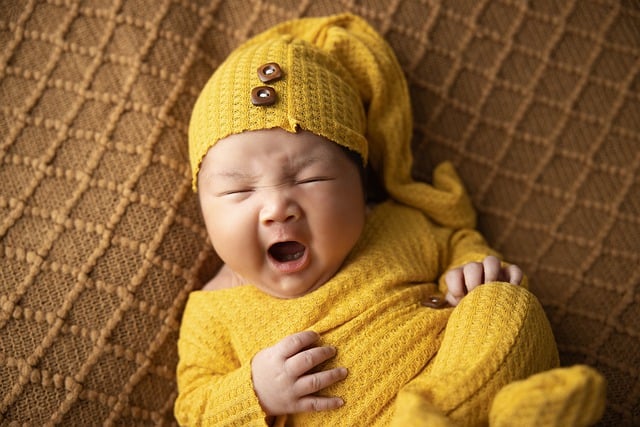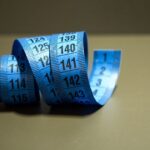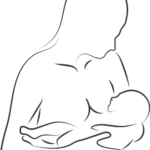Image credit to Pixabay
Baby To Sleep in a Pack and Play If you have ever been told to “sleep when the baby sleeps” the first week home, you may still have one question in your mind: but where can you safely offer your baby sleep if she/he absolutely will not tolerate the crib?
There isn’t much that is viable in solving the safe sleep space dilemma: crib, bassinet, and good news—a pack-and-play. Used correctly, play yards or playpens (known generally as a pack and play, or Pack ‘n Plays, which is the branded product by Graco) are generally safe sleeping options for several ages, weights, and sizes of babies. Here is what you need to know about how to let your baby sleep safely in a Pack ‘n Play. And, remember, following practices for safe sleep really does minimize the risk for SIDS.
Reasons You Should Have Your Baby Sleep in a Pack-and-Play
Baby To Sleep in a Pack and Play
You might have probably put in a playard or playpen, like Graco’s Pack ‘n Play, in your registry, as most people do. It is good to have a place where you could put your little one in a safe space while you’re hands-free or just having a break by yourself. A playard or playpen doesn’t need only to be a noontime play zone. Indeed, some parents make use of a playard like a Pack ‘n Play for sleeping. Irrespective of whether it is napping or nighttime sleeping, they really work well if used correctly. Size
Pack and plays take up much less space compared to a full-size crib; therefore, if you live in an apartment, have multiple kids in one bedroom, or don’t want to devote an entire wall to some massive crib, the pack and play can be a great space-saving alternative.
Many babies have trouble sleeping in the crib during early months simply because of that great contrast in environmental factors. For babies who like to feel snuggly, a pack-and-play can feel a lot cozier than a full-sized crib, and some babies end up preferring to sleep in one.
Portability
If your baby is going to regularly, or even occasionally, be sleeping somewhere other than his room—a nap during a visit to his grandparents’ house, perhaps—a pack-and-play can double as a temporary crib in this respect. It is the best way to provide a constant, familiar sleep environment while on the go without asking other caregivers to permanently keep a crib at their home.
It’s also easy to go with, as people are always on the move, due to the great packing and portable play. Most of these products for small children have been designed to compactly fold and serve as a lightweight way for your baby to get some sleep at any place the wind happens to blow you; say to a hotel while on vacation, or just to your local park on a good day.
Durability
It is thus a second piece of good news that there are no really stringent age limitations with such sleeping. Instead, it may rather be best to consider not using the pack-and-play when your baby has grown too big and doesn’t fit into it properly. Just don’t go beyond any height or weight restrictions set by the manufacturer.
“It’s not age, but size,” says Gary Kramer, MD, a private practice pediatrician in Miami. “Typically, this means up to about 30 pounds and 35 inches, which will probably take you well past the first year of life [with your baby].”
How To Use a Pack and Play for Safe Sleep
“A pack and play is generally a safe place for an infant to sleep if you follow specific recommendations,” says pediatric hospitalist Charnetta Colton-Poole, MD, FAAPS. If you’re using the playard per the manufacturer’s intention and following their directions for correct usage, you’re golden as far as laying your baby down for a nap or even nighttime sleep there.
Also Read : Why Babies Smell So Good
CPSC Safety Standard for Playpens
There are various specifications required by the CPSC that exist to ensure infant and young child safety when playing or sleeping inside the confines of a pack and play, or even a playpen. These include:
Measurements pertaining to:
Mesh sides, for breathability
The latching mechanism, so that the product does not fold unintentionally with the child inside
Floor strength
Testing accessories
Suffocation testing
Trap testing:
Laceration testing
For the most part, play comes right out of the box as another safe sleeping place for your baby. “As long as it meets the latest consumer product safety ratings, I’m O.K. with it [for sleep],” says Dr. Kramer.
“Add in all the other stuff that is going to tempt you to place it inside the play yard, and you’ll reduce the viability of providing safe sleep by increasing room for human error.” You shouldn’t use a mattress harder or softer than the one provided in the pack-and-play as its substitute.
With all this, you must observe the very principles for safe sleep in a crib with a pack-and-play that you are using with your child. That means you are not to place in plush toys, pillows, or blankets because they cause suffocation and might even result in SIDS with a play yard.
Tip
Baby To Sleep in a Pack and Play
Both of these sleep disturbances are dangerous. As such, the baby should always be placed to sleep alone on his back on the sleeping surface, and the surface should be flat and firm. Follow any instructions for use and cleaning that accompany the pack-and-play to have confidence you’re using it safely.
If it comes with a newborn bassinet attachment—many do—it’s okay to use for diaper changes, doctors say. “Even though most babies don’t roll over until 4 or 6 months of life, an agile baby could roll over in the bassinet sooner,” Kramer said.










